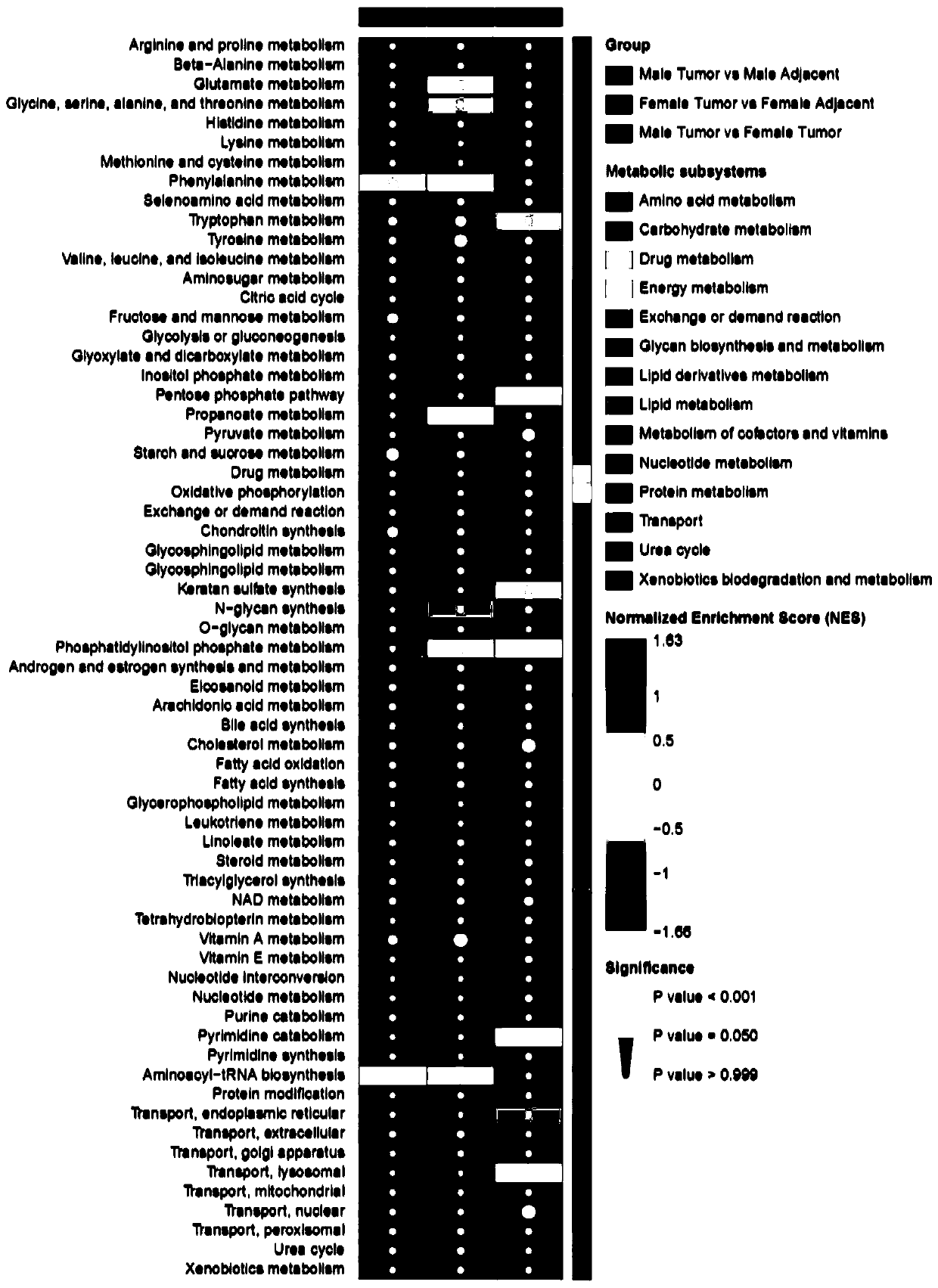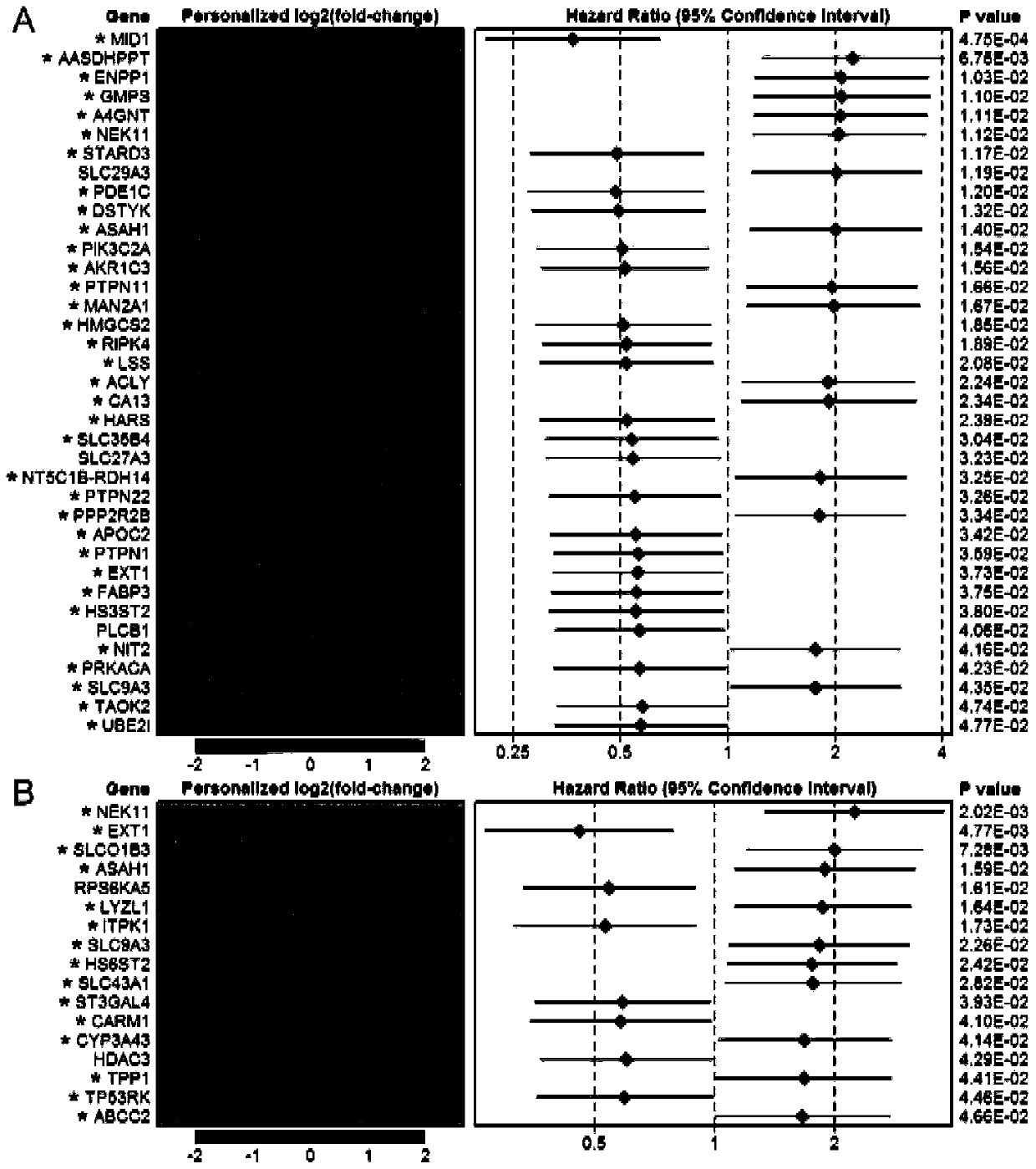Diagnostic marker for lung adenocarcinoma based on metabolic gene profile
A technology for diagnosing markers and lung adenocarcinoma, applied in the field of lung cancer diagnosis, can solve the problems that have not been widely studied
- Summary
- Abstract
- Description
- Claims
- Application Information
AI Technical Summary
Problems solved by technology
Method used
Image
Examples
Embodiment 1
[0024] Example 1: Confirmation method of markers
[0025] 1 Lung adenocarcinoma data collection
[0026] LUAD transcriptome and clinical data were downloaded from the Genomic Data Commons (GDC) data portal (https: / / portal.gdc.cancer.gov / ). A total of 513 tumor specimens and 57 adjacent specimens had complete transcriptome and clinical profiles, including 237 male tumor specimens, 23 male adjacent specimens, 276 female tumor specimens, and 34 female adjacent specimens. RNA-Seq was performed on all samples using the Illumina HiSeq 2000 platform (version 2) and normalized by the number of reads per kilobase length from a gene per million reads (FPKM). In order to ensure the reliability of detection and reduce background noise, we only choose 90% log 2 Genes with (FPKM) values greater than 0.1, and 13782 unique genes were obtained. To evaluate and validate the analysis results, we downloaded two lung cancer microarray datasets from NCBI-GEO (http: / / ncbi.nlm.nih.gov / geo): GSE6...
PUM
 Login to View More
Login to View More Abstract
Description
Claims
Application Information
 Login to View More
Login to View More - R&D
- Intellectual Property
- Life Sciences
- Materials
- Tech Scout
- Unparalleled Data Quality
- Higher Quality Content
- 60% Fewer Hallucinations
Browse by: Latest US Patents, China's latest patents, Technical Efficacy Thesaurus, Application Domain, Technology Topic, Popular Technical Reports.
© 2025 PatSnap. All rights reserved.Legal|Privacy policy|Modern Slavery Act Transparency Statement|Sitemap|About US| Contact US: help@patsnap.com



